Articles and News
JEWELRY TOPS BAGS AND SHOES FOR LUXURY SPENDING; HOLIDAY 2012 SHOULD BE GOOD FOR LUXURY SALES | September 19, 2012 (0 comments)
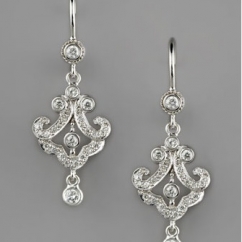
London, United Kingdom--What does luxury mean to American consumers? According to Mintel, an international market research firm, the definition of “luxury” means different things to different consumers.
And whatever they think luxury is, a just-released report from Booz & Co. indicates more than half of American consumers are planning to buy it this holiday season. 53% of respondents to the Booz survey said they’re planning at least one luxury purchase for the holiday.
The good news for jewelers is that Mintel’s report shows jewelry, along with electronics and clothing, is still considered a favorite luxury purchase. In Mintel’s most recent (2011) study of the U.S. luxury market, jewelry ranks number two just below electronics as a favored luxury purchase. Almost one-third of consumers in the study (31%) identified jewelry as their most recent luxury purchase, compared with 25% who named shoes and 24% who named handbags as their most recent luxury purchase. 36% named electronics.
The Mintel U.S. luxury market study identified these key points:
- Consumers’ definitions of “luxury” are changing, encompassing not only traditional super-premium goods but also categories like electronics, especially mobile devices.
- Middle-age luxury consumers buy jewelry; young adults spend on electronics and apparel
- Men prefer electronics while women focus on beauty and fashion.
- Women are more likely to view luxury purchases as an indulgence; men as a reward
- Handbag and jewelry purchases come mainly from the upper-income sector; i.e. household income above $75K and especially above $100K.
- Many luxury consumers prefer inconspicuous consumption, avoiding obvious designer initials, logos, or patterns.
- Discounts remain a key purchase driver.
Defining luxury. 52% of respondents to the Mintel study said “buying brands with a long-standing history of exclusivity” constitutes a luxury purchase. But 44% say a “luxury purchase” is simply the purchase of a non-necessity item. Women are more likely than men to define luxury in a more traditional way.
Exclusivity is important. 33% of respondents agreed with the statement, “Once a luxury/designer brand becomes attainable by most shoppers, I no longer consider them luxury goods.” Not surprisingly, uniqueness, superior materials, careful craftsmanship, and the ability to customize an item are also closely associated with luxury, and quality and craftsmanship are key purchase drivers among the most affluent consumers.
Gadgets and gems. Electronics—especially mobile devices—was the category most often cited when consumers are asked to describe both their last luxury purchase and what luxury upgrade they would like to purchase in the future.
But jewelry outpaced both bags and shoes—categories that have presented some threat to luxury jewelers—in Mintel’s findings. But that’s among all consumers. Among only women, 31% of women who made a luxury purchase in the last year cited “jewelry and watches” when asked what types of luxury item they bought, but 35% said handbags, 37% cosmetics, and 33% cited clothing. So it seems bags still remain a threat to luxury jewelers, but shoes less so: only 26% of women cited footwear as their most recent luxury purchase.
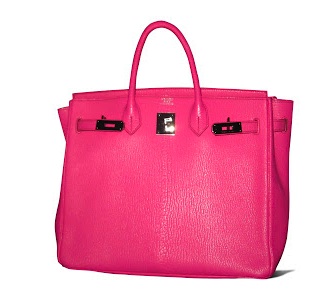
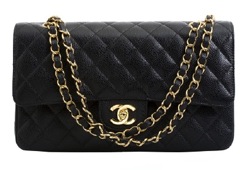
Luxury handbags pose a serious competitive threat to jewelers. An Hermes Birkin handbag, left, and a classic Chanel quilted bag, right, both cost significantly more than many pieces of fine jewelry. The Chanel retails for around $4,000--very comparable to the Penny Preville 18K white gold and diamond earrings shown at the top of the page, which are being offered for sale by Neiman Marcus for $4,020. And while a few Birkin models are available for less than $10,000, most carry price tags that could easily fund a nice diamond.
Booz’s study reinforced Mintel’s assertion that tablets and smartphones are the leading luxuries among electronic devices, but suggests there may be some saturation in this category. Only 62% of respondents to Booz’s holiday survey said these items were on their wishlist this year, a drop from previous years.
Younger consumers are more inclined to spend for electronics or clothing, while jewelry purchasers skewed older—Gen-X’ers and Boomers ages 35 to 64.
Why they buy and how to reach them. 50% of consumers age 18-24 said “to look good” was a key driver for luxury spending. 49% cited “as a reward.” But among older consumers, the key drivers were “a treat or indulgence” or “quality and craftsmanship.”
Mintel suggests fashion and jewelry communications be directed largely to affluent and/or young adult women, both of whom are inclined to shop for these items, and suggested luxury blogs like Luxuo.com, Luxist.com, and Pursuitist.com are popular with these customers.
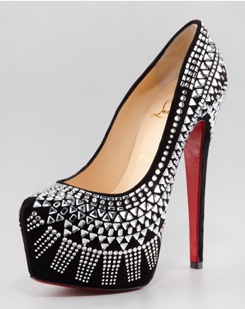
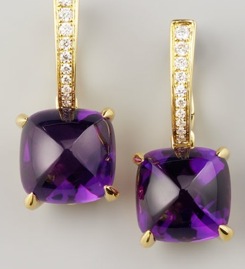
This Christian Louboutin shoe retails for $3895, $1,100 higher than these Frederic Sage amethyst, gold, and diamond earrings ($2,795) and more than $2,300 higher than the 18k gold and gemstone Marco Bicego rings below, which retail for $1,580. But at $1,600, the Fendi Mia Zucca metallic bag, below right, is competitive with the rings. All, Neiman Marcus.
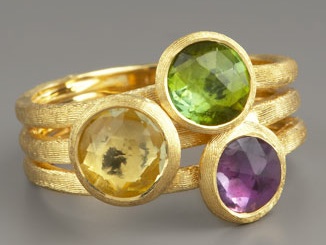
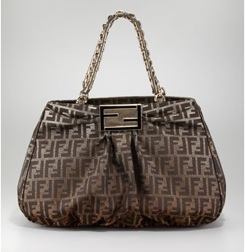
Price points. The bad news is that even rich Americans not only love a bargain, they expect one. Discounts remain a key driver for U.S. luxury spending, according to Mintel. Only 19% of respondents indicated they’re willing to spend full price for luxury purchases, while far more respondents said they’ll only buy if the price has been “drastically reduced;” i.e. at least 40% off the full price.
The Booz report confirms Mintel’s findings. 73% of its respondents say they expect to find bargains this holiday season, up from 62% last year.
Despite the hype, Black Friday is slowly becoming irrelevant, according to Booz. Consumers are looking earlier but buying later, and retailers are trying a host of strategies to convert that early looker into a buyer. A variety of multi-channel shopping patterns are expected to grow this holiday season, among them “showcasing,” or using in-store experience to view the goods but purchasing online, as well as online research/in-store shopping and online purchasing/in-store pickup is expected to grow significantly this season, says Booz.
The biggest challenge for brick-and-mortar retailers will be keeping the “showcasers” in the store or driving them to the retailer’s own website, rather than Amazon.com or another site. Some tips from the site:
- Expect customers to simultaneously browse in store and on their smartphones. Digital and physical experiences must be seamless and so compelling that customers never feel the need to check competitors.
- Offer links and other “buy-it-now” promotions to turn browsers online into buyers and drive in-store customers to your web site. Give them incentives to convert (buy) rather than going to a competitor.
- Capture consumer data in-store, and ping them a day or two later with a “too good to miss” promotion.
- Refresh your return and fraud policies to ensure online customers can return in-store.
- Offer free shipping, at least on targeted items or above a certain amount. Free shipping was a major driver of online sales last year.
- Use “we match online prices” messaging, especially on easily shopped items.
- Use loyalty points and consider double-points promotions to drive sales now.
Mintel suggests luxury retailers also consider partnering with online bargain service Groupon.com, because its findings show luxury consumers that index very high for usage of the site also index high for jewelry consumption. This includes the affluent, women, Asians, and consumers over age 35.
The global picture. On a worldwide scale, Mintel predicts 2012 or 2013 will be the year that Asia surpasses Europe to become the largest luxury market by revenue. (It surpassed the Americas in revenue in 2006.) But the mix of mature (US) and emerging economies (Brazil) in the Americas means the region’s share of the luxury market won’t erode as rapidly as Europe’s. India has not been a huge player in the global luxury market, despite being a major force in the diamond industry. While India has a heritage of luxury consumption, cultural preferences are for its own indigenous styles and brands. That may change, but not soon.
Among global luxury companies, LVMH remains number one. While its core strength is in soft luxury (fashion/leather goods), the fastest growing sector of the company is its hard goods, including jewelry and watches. Richemont, meanwhile, with its strength in jewelry and watches, is a powerful number two, with its flagship Cartier brand estimated to account for a full 3% of the luxury market—only a fraction of a percent less than Rolex, which on its own at number seven represents 3.2% of the luxury market.
The customer, here and there. Age is a great divide among global luxury consumers. In 2010, 40% of high net worth individuals (HNWI’s) in emerging Asian markets were under age 45, while in North America and Japan, more of these consumers were over age 65. And while the recession drove aspirational luxury consumers in the United States to buy within their means, rising aspirationals in Asia and Brazil still are willing to adapt or stretch their budgets to own luxury products. Mintel says not to assume that emerging markets will evolve exactly as the mature markets did.







